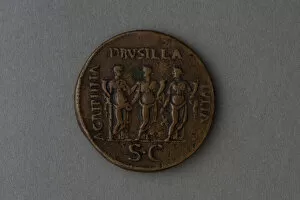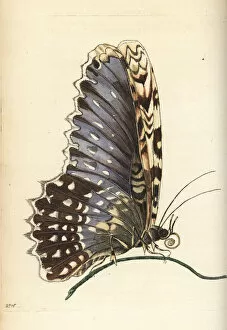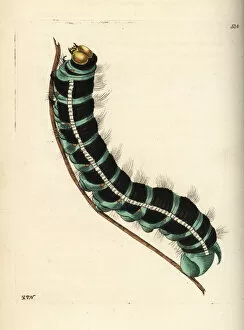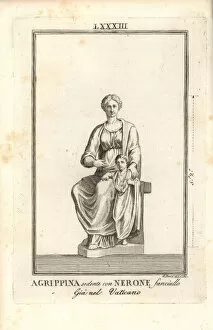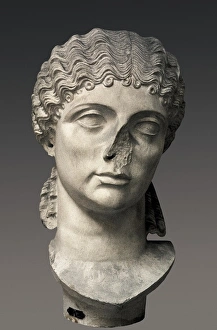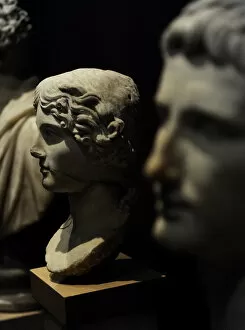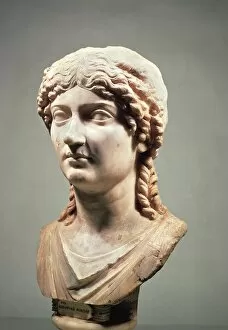Agrippina Collection
"Agrippina: A Powerful Roman Figure and Tragic Heroine" Agrippina, the daughter of Marcus Vipsanius Agrippa and Julia the Elder, was a prominent figure in ancient Rome
All Professionally Made to Order for Quick Shipping
"Agrippina: A Powerful Roman Figure and Tragic Heroine" Agrippina, the daughter of Marcus Vipsanius Agrippa and Julia the Elder, was a prominent figure in ancient Rome. Born in 14 BC, she would go on to play a significant role in Roman politics and history. One of the most notable events involving Agrippina was her landing with the ashes of Germanicus. Germanicus, her husband and beloved general, had died while on campaign in Syria. In an act of devotion and mourning, Agrippina brought his ashes back to Rome, solidifying her place as a grieving widow. In Racine's play "Britannicus, " Agrippina is portrayed as a complex character who manipulates those around her to secure power for herself and her son Nero. This depiction highlights both her ambition and cunning nature. Vipsania it also made an appearance in the Roman camp during military campaigns. Her presence among soldiers showcased not only her influence but also demonstrated that women could have active roles outside traditional domestic settings. An engraving titled "Anicet conduisant les assassins contre Agrippine" depicts a chilling scene where assassins are being led against Agrippina. This image captures the danger she faced due to political rivalries within the empire. The relationship between Nero and his mother is another intriguing aspect of Agrippina's life. Their bond was initially strong; however, it eventually deteriorated as Nero grew older and sought more independence from his domineering mother. Various coins depict Empress Agrippina throughout different periods of history. One coin shows a wreath intertwined with palm branches symbolizing victory or triumph – perhaps representing one of her many achievements or conquests. Another coin portrays Emperor Claudius alongside Agripinna's jugate heads – emphasizing their partnership during their reign together from AD 41-54.








